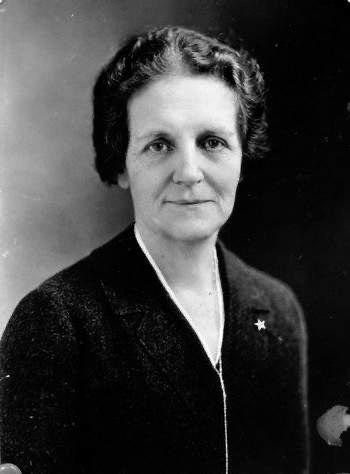Ola Babcock Miller

Did you go to the Iowa Historical Building on a field trip when you were studying Iowa History in grade school? Have you ever wondered why it is now called the Ola Babcock Miller State Office Building now?
Let me share her interesting and what had to be a courageous story. She was a female breaking glass ceilings back in the 1920’s and ‘30’s.
Eunice Viola “Ola” Babcock was born in rural Washington County 152 years ago. She attended Iowa Wesleyan College, taught in rural schools and at age 24 married Alex Miller. Mr. Miller was the editor of the Washington Democrat, and ran for Governor in 1926, was defeated and succumbed to a heart attack in 1927. They had one child, Ophelia, who married George Gallup the originator of the famed Gallup Poll.
Ola Miller was active in the women’s suffrage movement, traveling the state as a representative of the Iowa Democratic Party, speaking out for Democratic candidate Al Smith, the first Catholic to run for President. In 1932 she secured an interview with Democratic presidential candidate Franklin Roosevelt in New York City, for the Des Moines Register and became convinced he would be the next President.
In 1932, Mrs. Miller’s name was placed on the ballot as the Democratic candidate for Iowa Secretary of State. She recognized this was done as in appreciation for her efforts. She herself described her candidacy as “a martyrdom for the cause”. She didn’t expect to win, but FDR won by a landslide and swept many Democrats into office, and Iowa had its first female Secretary of State. She ran successfully two more times in ‘34 and 1936. It is said that George Gallup got his ideas for the political poll by measuring interest in his mother-in- law’s candidacy to understand her chances of winning.
Just before she took office in 1934, one of her best friends had a young son killed in an automobile accident. At that moment she vowed to do something about highway safety. After assuming office, she turned to the Motor Vehicle Department, which was part of the Secretary of State’s office. Without funds or authorization from the legislature she added to the duties of 15 “tax collectors”. They were staffers who were to enforce the licenses of automobile regulations in Iowa. She gave them additional duties of enforcing road safety. She called them together and instructed them “from now on, save lives first, money afterwards”. Each man was assigned to 6 or 7 counties and were to look for unsafe vehicles and drivers, and to either warn them or ticket them. She and the inspectors gave numerous speeches to high schools, clubs, and organizations. People were frightened when stopped by plain clothes officers. To rectify this, she brought them together and issued uniforms, which they had to pay for themselves, and sent them back to the county roads.
She got results. Deaths decreased by almost a 15% decline. Mrs. Miller used her influence, and in 1935 the Legislature passed House File 67, establishing the Iowa State Highway Safety Patrol of 53 men, along with a training camp.
Ola Babcock Miller continued her campaign for highway safety until her death at age 65 due to pneumonia in 1937. Governor Kraschel ordered the Statehouse closed. 1,500 persons attended her funeral at Washington, Iowa at the Methodist Church, among them 55 men of the Iowa Highway Patrol who served as pallbearers at the ceremony.
Thank you, Ola Babcock Miller for finding and using your voice. I am proud the Historical Building was renamed in your honor.
-Mary Weaver